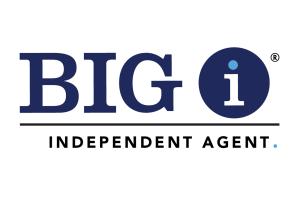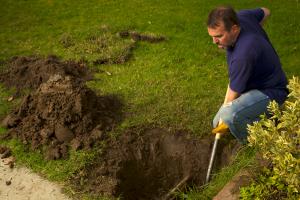Spring maintenance checklist

Spring is a time for transition - to warmer temperatures, reemerging plants and for homeowners to breathe new life into their homes. Home maintenance is crucial this time of year. Taking the time to address any issues now can help save you from potentially larger and more expensive problems later in the year.
But with so many home projects to consider, where do you start?
Use our checklist before and during this spring season to help keep you organized, reduce potential issues inside and outside your house and keep it safe for you and anyone visiting your home, sweet home.
Roof
If access to your roof presents a hazard, consider hiring a professional to help you complete the rest of this section.
- Examine shingles for damage or missing pieces
- Check gutters for any cracks or structural damage
- Ensure downspouts are aimed away from your home's foundation
- If you have a chimney, inspect for damage and consider having a professional clean it
- Trim back any trees with branches that hang over your home
- Repair any loose or missing flashing
Basement
- Inspect the foundation for any signs of cracks and consult a professional if simple caulking will not fix the issue
- Check for any signs of dampness or mold and remediate
- Consider installing a water shutoff device that can turn off the water to your home in the event you are away
- Place water sensors near existing pipes to alert you in the event of a leak
- If you have had signs of water damage, consider having a sump pump installed
- If your basement has a window, recaulk annually and fix any signs of damage
Yard
- Rake away any excess leaves, branches and other debris
- Use compacted soil near your foundation to prevent water from pooling
- Check outdoor faucets for freeze damage by running them for a short time
- Inspect lawn equipment, such as your lawnmower, to make sure it is ready for the summer
- Stain or reseal any wooden structures such as fences, railings and trellises
- Wash any outdoor furniture with water and a mild detergent
- Check your grill for any signs of damage, including burner jets, hoses and connections
- Look for any cracks in concrete walkways and fill with concrete crack filler or silicone caulk
Exterior walls
- Look for signs of termite damage, as they are more active in the summer, and call a professional if you see any potential problem spots
- Examine trouble spots and repair
- If you have wood siding, check for knots or pieces that have popped out of place
- If you have brick or stucco, look for any chipping or water penetration and use a sealant to prevent further moisture
- Replace any pieces of siding or trim if they are damaged or show signs of rotting
Indoors
- Inspect your attic for signs of colonizing ants or other insects
- Address any signs of mold or mildew
- Test smoke and carbon monoxide alarms
- Have a professional service your A/C unit
- Clean out dryer vents
- Replace any damaged or missing insulation and make sure your attic is well ventilated
- Vacuum upholstered furniture and dust everywhere
Want to keep a copy of the checklist handy while you perform these tasks? Download a copy.
Sources
Spring maintenance checklist
Spring is a time for transition - to warmer temperatures, reemerging plants and for homeowners to breathe new life into their homes. Home maintenance is crucial this time of year. Taking the time to address any issues now can help save you from potentially larger and more expensive problems later in the year.
But with so many home projects to consider, where do you start?
Use our checklist before and during this spring season to help keep you organized, reduce potential issues inside and outside your house and keep it safe for you and anyone visiting your home, sweet home.
Roof
If access to your roof presents a hazard, consider hiring a professional to help you complete the rest of this section.
- Examine shingles for damage or missing pieces
- Check gutters for any cracks or structural damage
- Ensure downspouts are aimed away from your home's foundation
- If you have a chimney, inspect for damage and consider having a professional clean it
- Trim back any trees with branches that hang over your home
- Repair any loose or missing flashing
Basement
- Inspect the foundation for any signs of cracks and consult a professional if simple caulking will not fix the issue
- Check for any signs of dampness or mold and remediate
- Consider installing a water shutoff device that can turn off the water to your home in the event you are away
- Place water sensors near existing pipes to alert you in the event of a leak
- If you have had signs of water damage, consider having a sump pump installed
- If your basement has a window, recaulk annually and fix any signs of damage
Yard
- Rake away any excess leaves, branches and other debris
- Use compacted soil near your foundation to prevent water from pooling
- Check outdoor faucets for freeze damage by running them for a short time
- Inspect lawn equipment, such as your lawnmower, to make sure it is ready for the summer
- Stain or reseal any wooden structures such as fences, railings and trellises
- Wash any outdoor furniture with water and a mild detergent
- Check your grill for any signs of damage, including burner jets, hoses and connections
- Look for any cracks in concrete walkways and fill with concrete crack filler or silicone caulk
Exterior walls
- Look for signs of termite damage, as they are more active in the summer, and call a professional if you see any potential problem spots
- Examine trouble spots and repair
- If you have wood siding, check for knots or pieces that have popped out of place
- If you have brick or stucco, look for any chipping or water penetration and use a sealant to prevent further moisture
- Replace any pieces of siding or trim if they are damaged or show signs of rotting
Indoors
- Inspect your attic for signs of colonizing ants or other insects
- Address any signs of mold or mildew
- Test smoke and carbon monoxide alarms
- Have a professional service your A/C unit
- Clean out dryer vents
- Replace any damaged or missing insulation and make sure your attic is well ventilated
- Vacuum upholstered furniture and dust everywhere
Want to keep a copy of the checklist handy while you perform these tasks? Download a copy.
Sources
Spring maintenance checklist
Spring is a time for transition - to warmer temperatures, reemerging plants and for homeowners to breathe new life into their homes. Home maintenance is crucial this time of year. Taking the time to address any issues now can help save you from potentially larger and more expensive problems later in the year.
But with so many home projects to consider, where do you start?
Use our checklist before and during this spring season to help keep you organized, reduce potential issues inside and outside your house and keep it safe for you and anyone visiting your home, sweet home.
Roof
If access to your roof presents a hazard, consider hiring a professional to help you complete the rest of this section.
- Examine shingles for damage or missing pieces
- Check gutters for any cracks or structural damage
- Ensure downspouts are aimed away from your home's foundation
- If you have a chimney, inspect for damage and consider having a professional clean it
- Trim back any trees with branches that hang over your home
- Repair any loose or missing flashing
Basement
- Inspect the foundation for any signs of cracks and consult a professional if simple caulking will not fix the issue
- Check for any signs of dampness or mold and remediate
- Consider installing a water shutoff device that can turn off the water to your home in the event you are away
- Place water sensors near existing pipes to alert you in the event of a leak
- If you have had signs of water damage, consider having a sump pump installed
- If your basement has a window, recaulk annually and fix any signs of damage
Yard
- Rake away any excess leaves, branches and other debris
- Use compacted soil near your foundation to prevent water from pooling
- Check outdoor faucets for freeze damage by running them for a short time
- Inspect lawn equipment, such as your lawnmower, to make sure it is ready for the summer
- Stain or reseal any wooden structures such as fences, railings and trellises
- Wash any outdoor furniture with water and a mild detergent
- Check your grill for any signs of damage, including burner jets, hoses and connections
- Look for any cracks in concrete walkways and fill with concrete crack filler or silicone caulk
Exterior walls
- Look for signs of termite damage, as they are more active in the summer, and call a professional if you see any potential problem spots
- Examine trouble spots and repair
- If you have wood siding, check for knots or pieces that have popped out of place
- If you have brick or stucco, look for any chipping or water penetration and use a sealant to prevent further moisture
- Replace any pieces of siding or trim if they are damaged or show signs of rotting
Indoors
- Inspect your attic for signs of colonizing ants or other insects
- Address any signs of mold or mildew
- Test smoke and carbon monoxide alarms
- Have a professional service your A/C unit
- Clean out dryer vents
- Replace any damaged or missing insulation and make sure your attic is well ventilated
- Vacuum upholstered furniture and dust everywhere
Want to keep a copy of the checklist handy while you perform these tasks? Download a copy.
Sources
Spring maintenance checklist
Spring is a time for transition - to warmer temperatures, reemerging plants and for homeowners to breathe new life into their homes. Home maintenance is crucial this time of year. Taking the time to address any issues now can help save you from potentially larger and more expensive problems later in the year.
But with so many home projects to consider, where do you start?
Use our checklist before and during this spring season to help keep you organized, reduce potential issues inside and outside your house and keep it safe for you and anyone visiting your home, sweet home.
Roof
If access to your roof presents a hazard, consider hiring a professional to help you complete the rest of this section.
- Examine shingles for damage or missing pieces
- Check gutters for any cracks or structural damage
- Ensure downspouts are aimed away from your home's foundation
- If you have a chimney, inspect for damage and consider having a professional clean it
- Trim back any trees with branches that hang over your home
- Repair any loose or missing flashing
Basement
- Inspect the foundation for any signs of cracks and consult a professional if simple caulking will not fix the issue
- Check for any signs of dampness or mold and remediate
- Consider installing a water shutoff device that can turn off the water to your home in the event you are away
- Place water sensors near existing pipes to alert you in the event of a leak
- If you have had signs of water damage, consider having a sump pump installed
- If your basement has a window, recaulk annually and fix any signs of damage
Yard
- Rake away any excess leaves, branches and other debris
- Use compacted soil near your foundation to prevent water from pooling
- Check outdoor faucets for freeze damage by running them for a short time
- Inspect lawn equipment, such as your lawnmower, to make sure it is ready for the summer
- Stain or reseal any wooden structures such as fences, railings and trellises
- Wash any outdoor furniture with water and a mild detergent
- Check your grill for any signs of damage, including burner jets, hoses and connections
- Look for any cracks in concrete walkways and fill with concrete crack filler or silicone caulk
Exterior walls
- Look for signs of termite damage, as they are more active in the summer, and call a professional if you see any potential problem spots
- Examine trouble spots and repair
- If you have wood siding, check for knots or pieces that have popped out of place
- If you have brick or stucco, look for any chipping or water penetration and use a sealant to prevent further moisture
- Replace any pieces of siding or trim if they are damaged or show signs of rotting
Indoors
- Inspect your attic for signs of colonizing ants or other insects
- Address any signs of mold or mildew
- Test smoke and carbon monoxide alarms
- Have a professional service your A/C unit
- Clean out dryer vents
- Replace any damaged or missing insulation and make sure your attic is well ventilated
- Vacuum upholstered furniture and dust everywhere
Want to keep a copy of the checklist handy while you perform these tasks? Download a copy.
Sources













